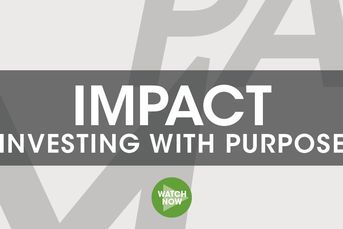Early 401(k) withdrawal replaces homes as America’s piggy bank
Premature withdrawals from retirement accounts have become America's new piggy bank, cracked open in record amounts during lean times by people such as Cindy Cromie, who needed the money to rent a U-Haul and start a new life.
Premature withdrawals from retirement accounts have become America’s new piggy bank, cracked open in record amounts during lean times by people such as Cindy Cromie, who needed the money to rent a U-Haul and start a new life.
Her employer, the University of Pittsburgh Medical Center, had outsourced Ms. Cromie’s medical transcription work. She said the move cut her income by as much as 60 percent, at times leaving her with minimum-wage pay.
So last year, at age 56, she moved about 90 miles from her home in Edinboro, Pa., into her mother’s basement. To make ends meet as she moved and then quit the job, Ms. Cromie pulled out $2,767 from her retirement savings.
“We made two trips and it just got to be real expensive,” she said. “That money, it was a security that I needed.”
Still unemployed, Ms. Cromie is trying to avoid tapping what’s left of her retirement savings — $7,000 that would be subject to taxes and a 10% extra penalty if she touches it in the next two to three years, before she turns 59½.
It’s a small number that’s part of a much larger picture: The Internal Revenue Service collected $5.7 billion in 2011 from penalties, meaning that Americans took out about $57 billion from retirement funds before they were supposed to.
The median size of a 401(k) is $24,400 as of March 31, with people older than 55 having $65,300, according to Fidelity Investments. Those funds can disappear quickly in retirement, and the early withdrawals indicate that the coming retirement crisis could be even more acute than expected.
‘MOST VULNERABLE’
“They get hit with the penalty at exactly the time when they’re the most vulnerable,” said Reid Cramer, director of the Asset Building Program at the New America Foundation, which tries to improve savings for lower-income families. “So it’s a real double-whammy.”
For decades, Americans’ homes were their piggy banks. As values rose, they refinanced or took out second mortgages. Since the housing collapse of 2008, that’s often no longer an option. Taking money from a 401(k) — and worrying about the consequences later — became a more attractive alternative and a record number of Americans made early withdrawals in 2010.
Adjusted for inflation, the government collects 37% more money from early-withdrawal penalties than it did in 2003. Meanwhile, the amount of home-equity loans outstanding was $704 billion in 2013, down 38% from the 2007 peak, according to Federal Reserve data.
“They didn’t have access to the home equity that they had in the past,” Mr. Cramer said. “And families looked around for what was left and they actually drained the value from the 401(k).”
In 2011, 5.7 million tax returns, or about 4% of all U.S. households, reported paying penalties on early withdrawals. The government collected more than enough money from these penalties to fund the National Oceanic and Atmospheric Administration.
As economic conditions deteriorate, such withdrawals spike, as they did in 1991, 2002 and 2007. The inflation-adjusted penalty collections declined 5 percent in 2011, the last year for which complete data is available.
‘IN HARDSHIP’
“You have this kind of Catch-22,” said Karen Friedman, executive vice president and policy director at the Pension Rights Center, a consumer group. “On the one hand, the penalty is meant to discourage people from taking the money out. At a time when millions of families are in hardship, they’re more likely to take that money out.”
Under U.S. law, money in tax-deferred retirement accounts can be removed without penalty after age 59½ and generally must be withdrawn starting after age 70½.
Withdrawals, at any age, are added to a taxpayer’s income and taxed at regular rates. The extra 10 percent penalty for 401(k) plans applies to early withdrawals, except in cases of disability and certain medical expenses.
And withdrawals from individual retirement accounts have a broader set of exceptions to the penalty, including spending for higher education and first-time home-buying.
The people who pay the penalty include younger workers who switch jobs and don’t bother to roll over their accounts and older workers who have no place else to turn.
A Federal Reserve study last year found that in 2010, 9.3% of taxpayers with retirement accounts or pensions were penalized, up from 7.9% in 2004.
CASH-OUT RATES
Younger workers ages 20 to 39 have the highest cash-out rates, with about 40 percent taking money with them when they switch jobs, according to data from Fidelity, the largest administrator of 401(k) plans.
“The pervasive thinking is, ‘Why bother rolling over $2,500? The taxes and penalties aren’t that daunting,’” said Michael Branham, a financial planner at Cornerstone Wealth Advisors. “What’s missing is the longer- term thinking in that decision-making process.”
A 30-year-old who cashes out $16,000 could lose $471 a month in retirement income cash flow by not leaving it invested in a retirement account, assuming retirement at age 67 and death at age 93, according to a Fidelity analysis. That scenario assumed a 4.7% annual return and a 401(k) balance at retirement of $87,500.
Depending on the rules of an employer’s 401(k) plan, workers may be able to borrow from their retirement accounts and pay the loan back with interest, without incurring the tax penalty.
Workers generally may borrow as much as 50 percent of their vested account balance up to a maximum of $50,000, according to the Internal Revenue Service.
The loan must be repaid within five years, unless the money was used to buy a primary residence. There’s a risk with taking a loan because most 401(k) plans require employees to repay loans in full when leaving a job, usually within 60 days.
Some withdrawals of money from Roth IRAs and 401(k)s, funded with post-tax money, can avoid penalties. Withdrawals of tax-advantaged earnings are typically subject to the penalty.
Congress, retirement experts and administration officials who are concerned about early withdrawals have two suggestions, totally at odds with each other: Lower the penalties or raise them. More restrictive rules might prevent people from putting money in retirement accounts in the first place, while lighter limits would make them more likely to take the money out.
OBAMA’S PROPOSAL
During the 2008 campaign, President Barack Obama proposed allowing penalty-free withdrawals of up to $10,000 from retirement accounts. That idea went nowhere and wasn’t included in the 2009 economic stimulus.
In 2012, the New York State Society of Certified Public Accountants proposed a temporary waiver of the penalties while families were recovering from the recession.
“The reality is people are going to do it, OK?” said Jonathan Horn, an accountant who helped write the proposal. “And if someone needs that money, the 10 percent is not stopping them.”
Moving in the opposite direction is House Ways and Means Committee Chairman Dave Camp, a Michigan Republican. In his 2014 draft plan to revamp the federal tax code, Camp proposed repealing the penalty exceptions for higher education and first-time home purchases, contending that the changes would encourage Americans not to tap their retirement accounts early.
Costco Wholesale Corp. tells workers about the dangers of dipping into their accounts and urges them not to, said Patrick Callans, senior vice president of human resources at the retailer. Costco has about 103,000 employees.
“Educating employees about the plan — and the benefits of saving for retirement — is good for employees and good for Costco,” Mr. Callans wrote in a letter to the company’s management teams in April, emphasizing that the company wants people to have enough saved when it comes time to retire.
The company doesn’t prohibit withdrawals because executives see it as the workers’ decisions.
“We try to be employee-friendly and much of it is the employees’ money,” Mr. Callans said.
Ms. Cromie, who worked with the Service Employees International Union to respond to the outsourcing, is now 57 and still jobless. She’s trying to avoid tapping her remaining retirement account.
“I’m hoping that I can just leave it as it is until I do get a job,” she said.
In the meantime, she’s applying for civil service jobs that she hopes can help her rebuild her cushion.
“It’s just a worry that I have every day,” she said. “I have this pit in my stomach.”
(Bloomberg News)
Learn more about reprints and licensing for this article.







